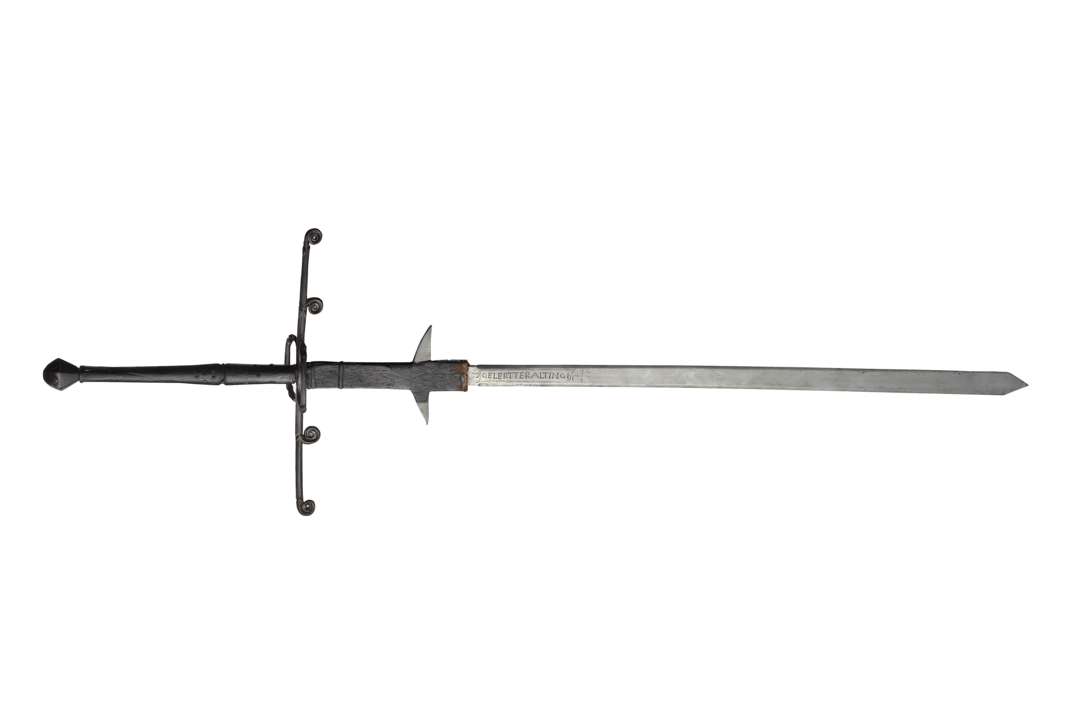The largest form of sword is the Zweihänder, the two-handed sword. The Zweihänder sword first emerged as early as the 13th century, however it was not until the second half of the 16th century that it developed into a special cutting weapon with its own design
Discover the
Universalmuseum Joanneum
Graz
Styria
Closed

More than 85 animal species from all continents live in the Herberstein Animal World.
Universalmuseum
Joanneum
Back to Universalmuseum Joanneum
Styrian Armoury > Discover > Collection > Edged weapons > Two-handed swords
Two-handed swords
South German, c.1600, mit Klingeninschrift: "Wer aller Dinge gelehrt ist, der ist bissig und kühn"

Image Credits
The largest form of sword is the Zweihänder, or “two-hander”, also known as the Bidenhänder, or “both-hander”. It has a long handle with a pear-shaped pommel and a straight crossguard, which serves as the simplest form of hand protection. The crossguard prevented the opponent’s blade from sliding down the wielder’s blade in combat and injuring his hand. It also kept his own hands from sliding forwards.
As the name suggests, because of their length of up to two metres, Zweihänderswords were wielded with both hands. This meant that the soldiers using them needed to be specially trained: mercenaries equipped with them had to present a certificate from a fencing school, but were also better paid. The handling of this weapon required physical strength and corresponding training.
The Swiss and German Landsknecht armies in particular used these mercenaries with Zweihänder in their battle formations. One section was assigned to protect the flag, others were posted in the first row and had the task of breaking through the enemy’s rows of pikes. The Zweihänderproved unsuitable for the fray, however, and in the second half of the century evolved into a ceremonial and guard’s weapon adorned with various ornaments. The undulating edge did not have any function as such, but served purely as decoration.


















